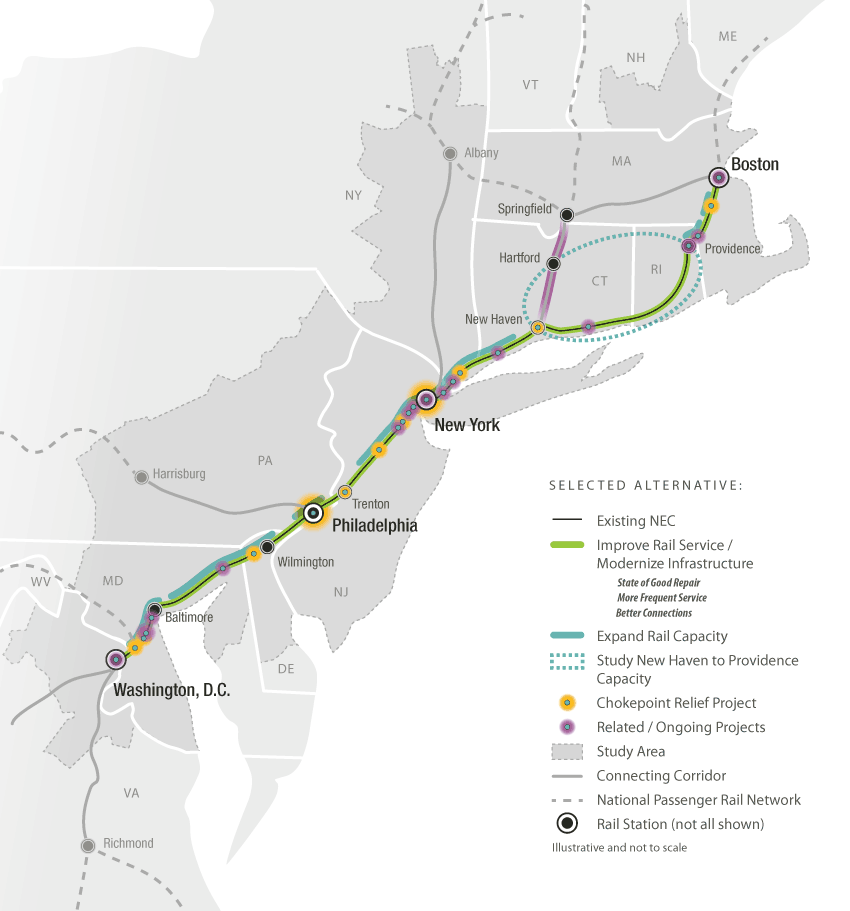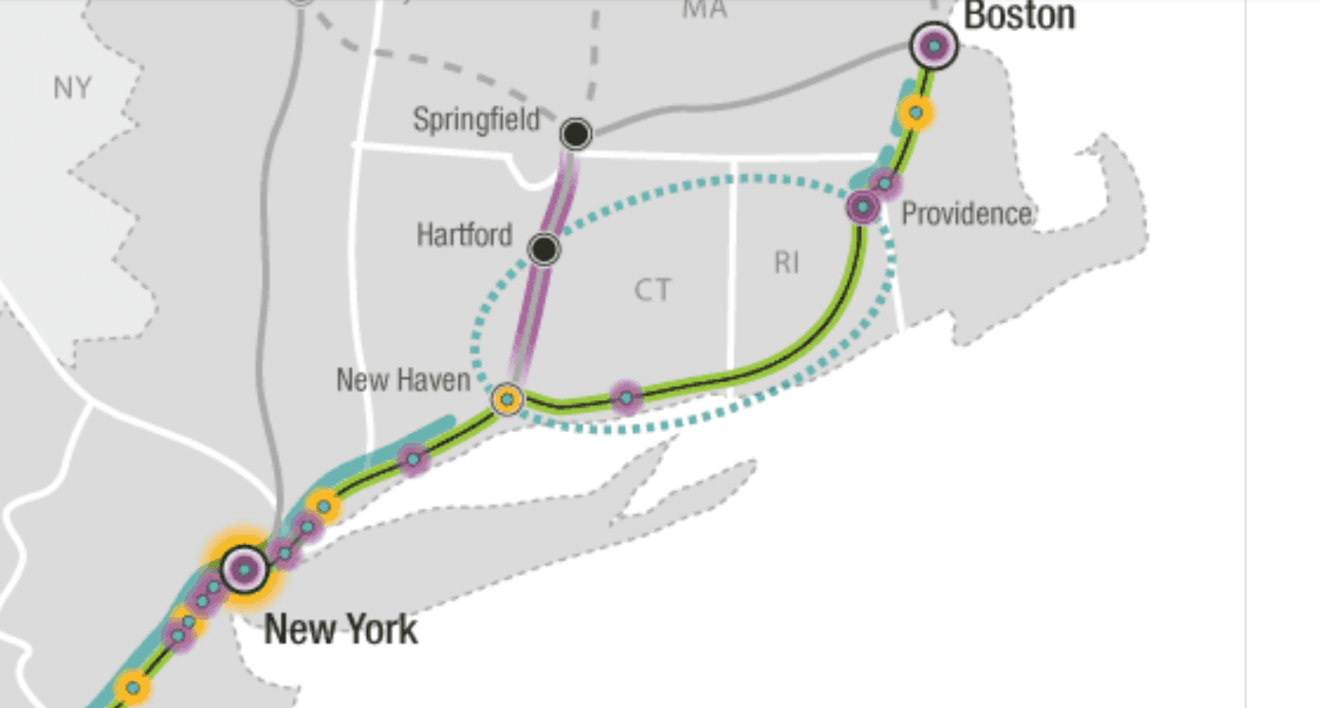OLD LYME – Five years after the Federal Railroad Administration set aside the idea of a high-speed rail bypass between Old Saybrook and Kenyon, R.I., in the face of near unanimous opposition across the region, the federal agency announced today that it was reviving a key study intended to settle, once and for all, a route for rail travel between New Haven and Providence.
By law, the completion of the New Haven to Providence Capacity Planning Study is a precondition for any investments to increase rail capacity in the region and must consider on- and off-corridor solutions linking New Haven to Providence.
The study was part of a biennial Northeast Corridor Project Inventory announced on Wednesday that calls for $24 billion of priority projects along the busy rail corridor linking Washington, D.C. and Boston, providing billions of dollars of possible investments in projects in Connecticut, including replacements of the Cos Cob, Devon, Saugatuck and Connecticut River bridges, as well as a new rail station for Hartford.
The study is expected to begin this November.

Asked for comment, Sen. Richard Blumenthal said the Infrastructure Investment and Jobs Act would provide more than $20 billion in funding toward the modernization of the Northeast Corridor.
“The Northeast Corridor is the engine that moves our state’s economy. The Federal Railroad Administration has taken one step further towards unlocking access to $24 billion in infrastructure funding that could be used to bring faster, safer rail services to Connecticut residents,” Blumenthal said.
Sen. Chris Murphy hailed the announcement as a “giant step forward” in ongoing efforts to reduce travel times and make the rail system more efficient.
“Thanks to the Bipartisan Infrastructure Law, we now have a strategy for how to best improve the NEC over the next 5 years that maximizes every single taxpayer dollar and ensures we have a plan in place to see these projects through to the end,” Murphy said in a statement.
But in Old Lyme, the town that once sparked opposition to the initial plan after it was caught unaware of likely impacts, once again town leaders appear to have been left out of the loop.
Reached by phone on Wednesday, First Selectman Tim Griswold of Old Lyme said he hadn’t heard anything about it.
“We’ve had no direct calls from the DOT regarding the study,” he told CT Examiner.
Sam Gold, the executive director of RiverCOG, the regional planning agency tasked with coordinating state and federal transportation planning in the region, told CT Examiner that he was similarly caught unaware.
“We have not heard anything about that,” Gold said. “That was a major flaw in FRA’s previous studies – they didn’t reach out to municipalities directly, or when they did it was really late in the process. And so they could have managed their project better with better communication to the municipalities.”
A 2017 news report by Ana Radelat for CT Mirror quoted FRA project lead Rebecca Reyes-Alicia explaining that the study would allow for a “healthy process” for determining rail service through eastern Connecticut, and that “there was no consensus” regarding the proposed Kenyon to Old Saybrook Bypass.

